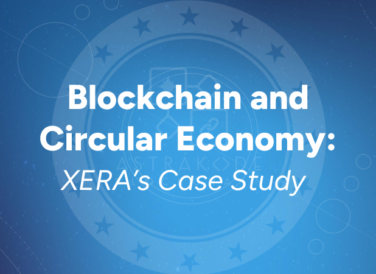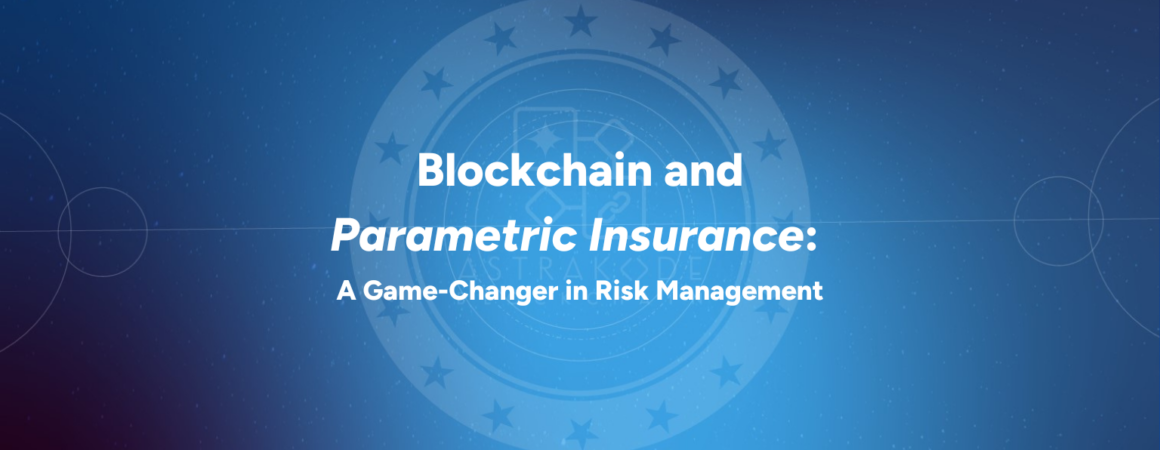
Blockchain and Circular Economy: XERA’s Case Study
In today’s fast-paced business world, staying ahead means embracing innovation and sustainability. XERA, an Italian…

Imagine a small farmer in Southeast Asia whose livelihood is threatened by a sudden and severe drought. Traditional indemnity-based insurance models could take months to process his claim, leaving the farmer vulnerable to financial ruin due to lengthy investigations and bureaucratic delays. Now, picture a system where a payout is triggered automatically as soon as rainfall drops below a predefined level—no paperwork, no disputes, no delays. This is the promise of blockchain parametric insurance, an innovative solution reshaping risk management. By integrating blockchain technology, this system not only offers faster relief but also brings unprecedented clarity, transparency, and trust to the insurance process.
Parametric insurance is a model that relies on predefined triggers, such as weather conditions, to execute payouts swiftly. Unlike traditional insurance, which compensates based on assessed losses, parametric insurance focuses on measurable metrics, such as wind speed, rainfall, or seismic activity. This eliminates the need for subjective loss assessments and accelerates financial relief. With a transparent and streamlined claims process, policyholders experience fewer delays, fostering a sense of reliability and satisfaction.
Blockchain technology is revolutionizing parametric insurance by addressing inefficiencies and building trust within the insurance ecosystem. By integrating decentralized networks, blockchain enhances transparency, coherence, and immutability across the value chain. Automated smart contracts execute payouts when predefined triggers are met, minimizing delays and fraud. Furthermore, blockchain’s secure ledger provides tamper-proof records of transactions, ensuring greater accountability and confidence for policyholders.
The concept of parametric insurance dates back to the 1990s with the advent of weather derivatives. These instruments helped businesses hedge against unexpected climate conditions by prioritizing quantifiable metrics. The model gained prominence after Hurricane Andrew in 1992 when traditional insurance struggled to respond to large-scale disasters. Today, parametric insurance is a global phenomenon, addressing risks in industries ranging from agriculture to tourism. As the world faces increasing climate uncertainties, parametric insurance continues to evolve, offering tailored solutions to meet diverse needs.
The global parametric insurance market is projected to reach $34.4 billion by 2033 (CAGR 6.6%) [Allied Market Research, 2023]. While agriculture remains a dominant sector, construction is expected to see rapid growth due to the increasing impact of temperature changes on projects. Parametric insurance’s ability to mitigate weather-related risks makes it an attractive solution for contractors and other stakeholders. Additionally, emerging markets are beginning to adopt parametric models to protect against natural disasters, signaling a shift towards more proactive risk management worldwide.
Despite its potential, parametric insurance faces challenges:
As demand for agile risk management grows, parametric insurance is poised for significant advancements:
Communities could use blockchain to self-insure, pooling funds against shared risks. This decentralized approach empowers local groups to take charge of their financial security.
Advanced algorithms will refine risk models, reducing basis risk and enabling hyper-localized coverage. These AI-driven systems also provide predictive insights, allowing policyholders to anticipate and mitigate potential risks.
Beyond weather, parametric models could address cyberattacks, supply chain disruptions, and pandemics. Such versatility ensures its relevance in an increasingly interconnected and unpredictable world.
Parametric insurance represents a radical shift in managing risk and recovery. By focusing on transparency, speed, and innovation, it addresses the limitations of traditional insurance. At AstraKode, we simplify blockchain complexities through a no-code platform, enabling traceable and accountable processes. Together, we can create a future where individuals and businesses are empowered to weather any storm—literally and figuratively. Our commitment lies in bridging the gap between technology and accessibility, ensuring that everyone can benefit from these advancements.
The question isn’t whether parametric insurance will become the norm; it’s how quickly we can make it accessible to everyone. Are you ready to join the revolution? Visit AstraKode to learn more. Let’s transform risk into opportunity, one block at a time. With innovation as our compass, the future of insurance is brighter than ever, paving the way for a more resilient global community.

In today’s fast-paced business world, staying ahead means embracing innovation and sustainability. XERA, an Italian…

In the dynamic world of blockchain technology, the concept of blockchain interoperability stands as a…

Blockchain leads in transparency and security with its real-time ledger system that tracks and validates…